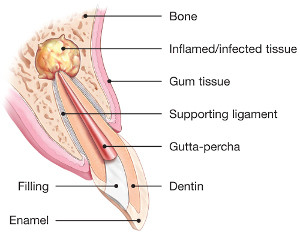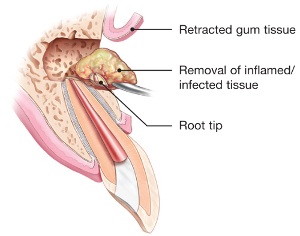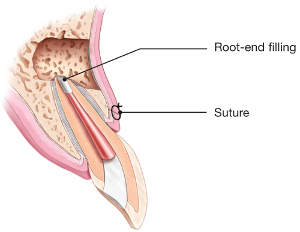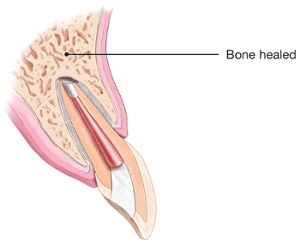Root-end Surgery
Occasionally, a nonsurgical root canal procedure alone cannot save your tooth and your endodontist may recommend surgery. Read on to learn why you might need endodontic surgery and view a step-by-step explanation of the most common surgical procedure, endodontic microsurgery or apicoectomy.

Why do I need endodontic surgery?

What is endodontic microsurgery?
First
Removal
In this procedure, the endodontist opens the gum tissue near the tooth to see the underlying bone and to remove any inflamed or infected tissue.

Second
Filling
A small filling may be placed in the root to seal the end of the root canal, and a few stitches or sutures are placed in the gingiva to help the tissue heal properly.

Third
Healing
Over a period of months, the bone heals around the end of the root. Be sure to follow up if you have any concerns.


